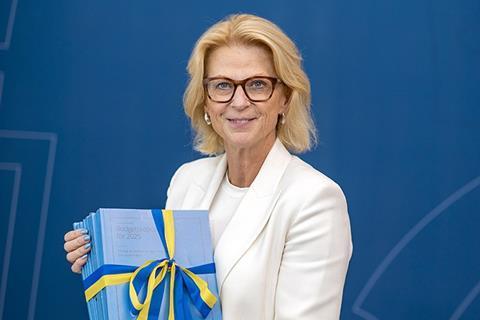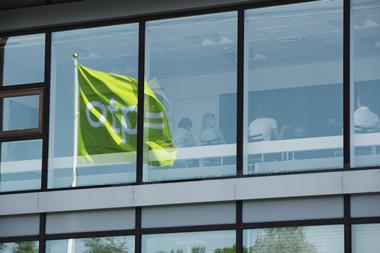Pensions and green investment proposals contained in the Swedish government’s 2025 budget have met with approval from the industry – along with a call to go further with changes to the public pension system, and another to establish long-term political stability around sustainable investment.
Two years into its mandate, the Swedish coalition government – led by prime minister Ulf Kristersson of the Moderate Party – put forward budget plans yesterday featuring tax cuts to help restore household purchasing power after high inflation and aid economic recovery.
Finance minister Elisabeth Svantesson said: “Going forward, the task will be to ensure that high inflation does not return, and at the same time to implement reforms and investments that build a more prosperous, safer and more secure Sweden for generations to come.”
This budget was an important step in that direction, she added.
She said the government would present an infrastructure bill in the next few months, in which it would propose expanding the financial framework for transport infrastructure by more than SEK200bn for the period between 2026 and 2037.
Maintenance of the Swedish road and rail network had to improve, and the bill was about the need for both businesses and households to phase out fossil fuels to achieve the goal of net zero emissions by 2045, the government said.
Insurance Sweden (Svensk Forsäkring) – the industry association for the insurance and pensions sector – welcomed several proposals, but said certain conditions were needed to enable its members to invest.
Magnus Vesterlund, the lobby group’s chief economist, said: “Investments outlined in the budget provide better conditions for investments in the green transition”.
He said clear rules of the game were crucial for sustainable investments, and the announcements about energy supply did provide a direction forward.

But he added: “However, we see that long-term political stability and clear legislation are required to secure sustainable investments and security for the future”.
Meanwhile pensions and insurance company Folksam remarked on the government’s proposal to cut taxes for pensioners.
For a sustainable and long-term solution to the problems in the public pension system, more hand to change, said Marcus Svedberg, chief economist of the SEK890bn (€78bn) group which includes municipal pension provider KPA Pension.
“The proposed tax cut of just under SEK200 a month is undoubtedly a welcome addition for many pensioners, but it is not enough to compensate for the reduced purchasing power caused by inflation and the erosion of the public pension,” he said.
“For a sustainable and long-term solution to the problems in the public pension system, other measures are needed,” Svedberg said.
These included a higher pension entitlement, a pension accelerator which distributed the surplus in the pension system, and a modernisation of the guarantee pension, as Folksam had already proposed, he said.
Svedberg said those measures would increase pensions by between SEK1,000 and SEK2,300 per month before tax, and boost municipalities’ taxation power.
“According to calculations by Folksam, these measures, if implemented, could also generate a surplus in the state treasury of at least eight billion,” the chief economist said.
He said Folksam also hoped the government will soon introduce tax incentives for pension savings, an area where he said Sweden was lagging behind in relation to the OECD countries.
“The government’s decision to stimulate opportunities to save by lowering the tax on endowment insurance and investment savings accounts is a welcome step in the right direction,” Svedberg said.
The budget is based on an agreement between the government – a coalition between the Moderates, Christian Democrats and Liberals — and the far-right Sweden Democrats, who have been the second-biggest parliamentary party since the 2022 general election.
Read the digital edition of IPE’s latest magazine




































No comments yet